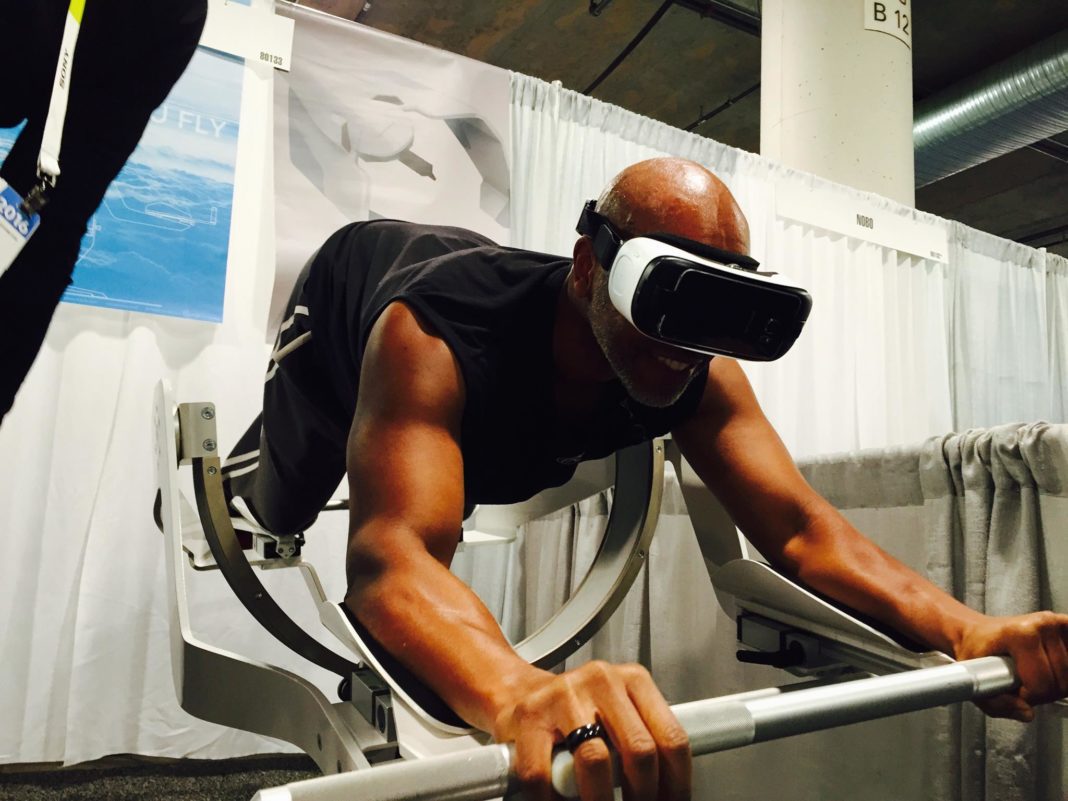There has been much talk about the gamification of conferences, meetings and events. The logic is that if a seemingly boring experience can be turned into one that involves competition and the quest for achievement, the participants will be thoroughly engaged. This phenomenon is referred to as gamification. Gamification has proven so successful that it has leaked into other areas of life. Those who work within the virtual reality community are convinced that the gamification of exercise will encourage people to stay fit and healthy.
Why VR Exercise Might Eventually Top Traditional Exercise
Ask anyone who works out on a regular basis and he will admit that his exercise routine has become a bit stale over time. One can only run across the same landscape or lift weights in the same setting for so long before he grows bored with the environment. Enter the gamification of exercise through virtual reality. The beauty of working out in a virtual environment is that it is dynamic. Virtual reality technology is rapidly improving to the point that users can customize their own idiosyncratic workout settings. Getting in a workout in a gorgeous virtual environment that changes by the day is much more dynamic than hitting the same old gym or running path.

Virtual reality workouts should also be commended for their competitive nature. Many virtual reality exercise apps track user performance data in-depth for comparison purposes. Aiming to beat one’s previous workout pace, reps or other metric makes exercise into more of an enjoyable experience. Add in the fact that these virtual exercise sessions allow one to interact with his environment, virtual competitors and even virtual instructors and it is easy to see why so many are intrigued by virtual workouts. It won’t be long until VR users can engage in online competitions with other VR users across vast distances. Even if it is merely comparing one’s VR performance to that of his friends or even total strangers, the quantification of one’s physical activity serves as a strong motivator. This gamification is exactly what many need to stay engaged with their workout sessions, shed weight and tone muscles.
Why People Respond to Virtual Challenges
Virtual reality exercise has the potential to turn idle and out of shape individuals into uber-healthy fitness fanatics. People really do respond to challenges, especially if they are presented in a fun video game-like format. Consider the success of Nintendo’s Wii. This motion-controlled video game technology was a top-seller thanks to the fact that it got people moving in an incredibly fun way. VR fitness will enhance the joy of motion controlled video game exercises. The key difference between the Nintendo Wii and VR workouts is the addition of the virtual reality headset.

Strapping on a headset serves to remove the individual from his true surroundings and position him in a virtual space that seems quite realistic. When one is immersed in a seemingly real environment, he is much more inclined to give his all during physical fitness challenges. All of a sudden, being active becomes much more enjoyable than hanging out on the couch and watching TV or performing another passive activity.
Examples of Workout Gamification
Virtual reality fitness apps are debuting right and left. Many make use of augmented reality while some put the user in a truly virtual environment created with the VR headset. Check out Superhero Workout for an example of workout gamification in action. This fitness app pits the player against evil aliens who aim to destroy our planet. Superhero Workout makes use of motion detection technology for the user to combat aliens through exercises like jumping jacks, punches, crunches and beyond.
Another fitness app, Zombies, Run!, places the user in a post-apocalyptic world rife with zombies. The player must survive by running around to gather supplies and complete various missions. If he is caught by the zombies, he loses. These are just two examples of how gamifying physical activity makes it that much more engaging and endearing.





